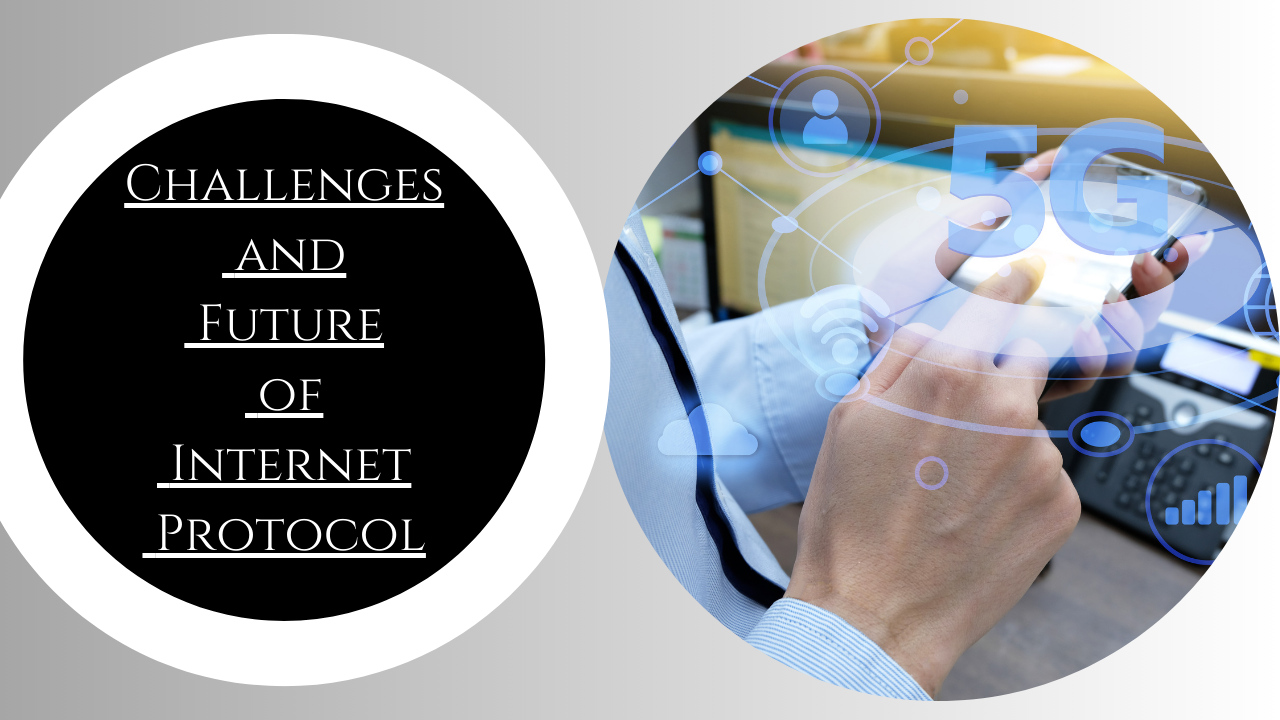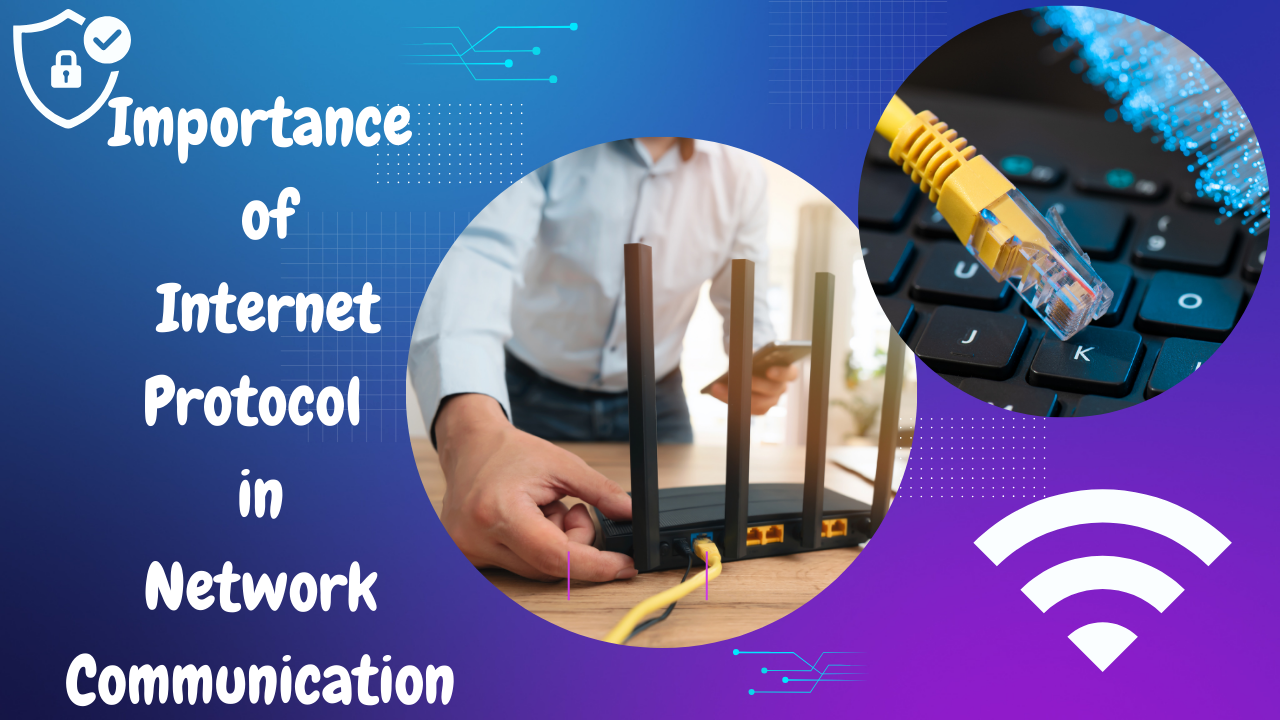In our increasingly interconnected world, the ability to communicate across networks is vital. Whether it’s sending an email, streaming a video, or accessing a website, all digital communication relies on a set of standardized protocols. One of the most critical of these is the Internet Protocol (IP). This article explores the importance of Internet Protocol in network communication, discussing its fundamental roles, variations, and implications for modern digital communication.
What is Internet Protocol
Internet Protocol is a set of rules that govern how data packets are transmitted over a network. It defines the format of the packets and how they are addressed and routed to ensure that they reach their intended destination. The Internet Protocol is part of the Internet Protocol Suite, which includes other protocols like Transmission Control Protocol (TCP), User Datagram Protocol (UDP), and Internet Control Message Protocol (ICMP).
The main functions of IP include:
Addressing: Each device on a network must have a unique identifier, known as an IP address, which allows data to be sent to and from the correct locations.
Routing: IP determines the best path for data to travel across interconnected networks, ensuring efficient delivery.
Fragmentation and Reassembly: Large packets may be split into smaller fragments for easier transmission and reassembled at the destination.
The Role of IP in Network Communication
The Internet Protocol plays several crucial roles in facilitating network communication. These include:
Unique Addressing System
At its core, IP provides a unique addressing system that allows devices to communicate with each other over the internet. Each device connected to a network is assigned an IP address, which can be likened to a mailing address. Just as letters are delivered to a specific address, data packets are sent to a specific IP address. This unique identification is critical for ensuring that data reaches the correct destination without confusion.
Data Packet Routing
Routing is another essential function of the Internet Protocol. When data is sent over a network, it does not travel in a straight line from sender to receiver. Instead, it may pass through various routers and intermediary devices along the way. IP determines the most efficient path for the data packets based on current network conditions, which can change rapidly. This dynamic routing capability allows for more efficient use of network resources and reduces latency.
Support for Fragmentation
Data packets sent over the internet can vary in size. Some networks may have limitations on the maximum packet size that can be transmitted. IP addresses this by allowing packets to be fragmented into smaller pieces if necessary. These fragments are transmitted separately and then reassembled at the destination. This fragmentation and reassembly process ensures that data can traverse networks with different transmission capacities without loss.
Error Handling
While Internet Protocol does not guarantee error-free transmission, it does include mechanisms for basic error handling. For instance, if a packet cannot be delivered, an error message can be generated and sent back to the sender via ICMP. This feedback loop allows senders to be informed of issues and take corrective action, ensuring more reliable communication.
Types of Internet Protocols
There are two main versions of Internet Protocol in use today: IPv4 and IPv6. Each has its significance and implications for network communication.
IPv4 (Internet Protocol Version 4)
IPv4 is the fourth version of the Internet Protocol and was introduced in the early 1980s. It uses a 32-bit addressing scheme, which allows for approximately 4.3 billion unique IP addresses. Although this number seemed sufficient in the early days of the internet, the exponential growth of internet-connected devices has led to a depletion of available IPv4 addresses.
Key features of IPv4 include:
- Address Format: IPv4 addresses are expressed in a dotted-decimal format (e.g., 192.168.1.1).
- Classes of Addresses: IPv4 defines several classes of addresses (A, B, C, D, and E), each serving different purposes.
IPv6 (Internet Protocol Version 6)
To address the limitations of IPv4, IPv6 was introduced in the late 1990s. It uses a 128-bit addressing scheme, allowing for an almost limitless number of unique addresses—approximately 340 undecillion (3.4 x 10^38). This expansion is crucial for accommodating the growing number of internet-connected devices, including smartphones, IoT devices, and smart appliances.
Key features of IPv6 include:
- Address Format: IPv6 addresses are expressed in hexadecimal format, separated by colons (e.g., 2001:0db8:85a3:0000:0000:8a2e:0370:7334).
- Simplified Addressing: IPv6 simplifies address assignment and management, making it easier for devices to connect to networks.
The Impact of IP on Modern Communication
In network communication, we cannot underestimate the significance of the Internet Protocol in modern digital life, as various aspects demonstrate its impact:
Global Connectivity
Internet Protocol enables global connectivity by providing a common framework for devices to communicate regardless of their geographical location. This universal applicability is a foundational element of the internet, allowing diverse systems to work together seamlessly.
Support for Emerging Technologies
As technologies like the Internet of Things (IoT), artificial intelligence, and cloud computing continue to evolve, the role of IP becomes increasingly important. These technologies rely on robust network communication facilitated by Internet Protocol to function effectively. For instance, IoT devices require unique IP addresses to communicate with each other and with central systems, emphasizing the need for IPv6.
Enhanced Security Protocols
While IP itself does not provide encryption or security features, it serves as the foundation for implementing additional security protocols. You can secure IP communications using techniques like IPsec (Internet Protocol Security) by encrypting data packets and ensuring data integrity. This capability is vital for protecting sensitive information transmitted over networks.
Facilitating Remote Work and Collaboration
The rise of remote work and online collaboration tools has heightened the importance of reliable network communication. Internet Protocol enables seamless data exchange between teams and individuals across different locations, fostering productivity and innovation. Applications like video conferencing and real-time document editing depend heavily on the efficiency of IP for smooth operation.
The Relationship Between Internet Protocol and Network Performance
Understanding how Internet Protocol impacts network performance is crucial for optimizing data transmission and ensuring efficient communication. This topic can cover aspects such as:
Latency and Bandwidth: How IP routing decisions affect latency (the time it takes for data to travel) and overall bandwidth utilization.
Quality of Service (QoS): The role of IP in implementing QoS policies, which prioritize certain types of traffic (like video streaming or VoIP) to enhance user experience.
Network Congestion: How IP addresses network congestion and the strategies it employs to manage data flow and prevent packet loss.
Monitoring and Optimization: Tools and techniques for monitoring IP performance, identifying bottlenecks, and optimizing routes to improve communication efficiency.
Internet Protocol and IoT
As the Internet of Things (IoT) continues to expand, the importance of Internet Protocol in connecting devices becomes even more pronounced. This topic can delve into:
IP Addressing in IoT: The necessity of unique IP addresses for billions of connected devices and the transition to IPv6 to accommodate this growth.
Communication Standards: How IP underpins various communication standards and protocols that facilitate interoperability among diverse IoT devices.
Security Considerations: The challenges of securing IoT devices using IP-based communication, including potential vulnerabilities and strategies for safeguarding data.
Real-World Applications: Examples of how IP is utilized in smart homes, industrial IoT, and smart cities, highlighting its role in driving innovation and efficiency.
Challenges and Future of Internet Protocol
While Internet Protocol has played a crucial role in the development of network communication, it is not without challenges. As the number of connected devices continues to grow, managing IP addresses and ensuring efficient routing becomes increasingly complex.
IPv4 Address Exhaustion
The exhaustion of IPv4 addresses remains a pressing issue. Although many organizations are transitioning to IPv6, the slow adoption of IPv6 means that many systems still rely on IPv4. Network Address Translation (NAT) has been a temporary solution, allowing multiple devices to share a single IP address, but it introduces complexities and potential issues with connectivity.
Adoption of IPv6
Transitioning to IPv6 is essential for the continued growth of the internet. However, the dual-stack system—where both IPv4 and IPv6 operate simultaneously—can complicate network management and introduce compatibility issues. Organizations must invest in upgrading their infrastructure and educating personnel about IPv6 to ensure a smooth transition.
Emerging Security Threats
As cyber threats evolve, so too must the security measures surrounding Internet Protocol. Protocols like IPsec can help, but additional layers of security, such as firewalls, intrusion detection systems, and secure application development practices, are necessary to mitigate risks. Continuous monitoring and updating of security protocols are essential to protect sensitive data transmitted over IP.
Conclusion
The Internet Protocol is a cornerstone of network communication, facilitating data transmission, routing, and addressing. Its ability to support a vast number of devices and enable global connectivity has made it integral to modern life. As the internet continues to evolve, so too must the protocols that support it. Embracing IPv6, enhancing security measures, and addressing the challenges of network management will be crucial for ensuring the continued effectiveness of Internet Protocol in the digital age.
Anyone engaged in network communication, from students to professionals, must understand the importance of Internet Protocol. As we move forward into a more connected future, the role of IP will only become more significant, shaping the way we interact with technology and each other.
FAQs
What is the primary function of Internet Protocol?
The primary function of Internet Protocol (IP) is to facilitate the addressing, routing, and delivery of data packets across networks. It ensures that each device on a network has a unique IP address, enabling effective communication between devices.
How does IP address exhaustion affect internet users?
IP address exhaustion, particularly with IPv4, can lead to connectivity issues as there are fewer available addresses for new devices. This situation can necessitate the use of techniques like Network Address Translation (NAT) or a transition to IPv6, which offers a vastly larger address space.
What is the difference between IPv4 and IPv6?
IPv4 uses a 32-bit addressing scheme, allowing for approximately 4.3 billion unique addresses, while IPv6 uses a 128-bit addressing scheme, accommodating about 340 undecillion addresses. The development of IPv6 addressed the limitations of IPv4, particularly as the number of internet-connected devices continued to grow.
How does Internet Protocol ensure data integrity during transmission?
While IP itself does not guarantee data integrity, it supports error handling through protocols like ICMP (Internet Control Message Protocol). ICMP can report errors in data delivery, allowing the sender to take corrective action. IPsec, among other additional layers, can be used to enhance security and integrity.
Why is understanding Internet Protocol important for network professionals?
Understanding Internet Protocol is crucial for network professionals because it forms the foundation of all network communication. Knowledge of IP helps in troubleshooting network issues, optimizing performance, and implementing security measures, all of which are essential for maintaining effective and secure networks.

